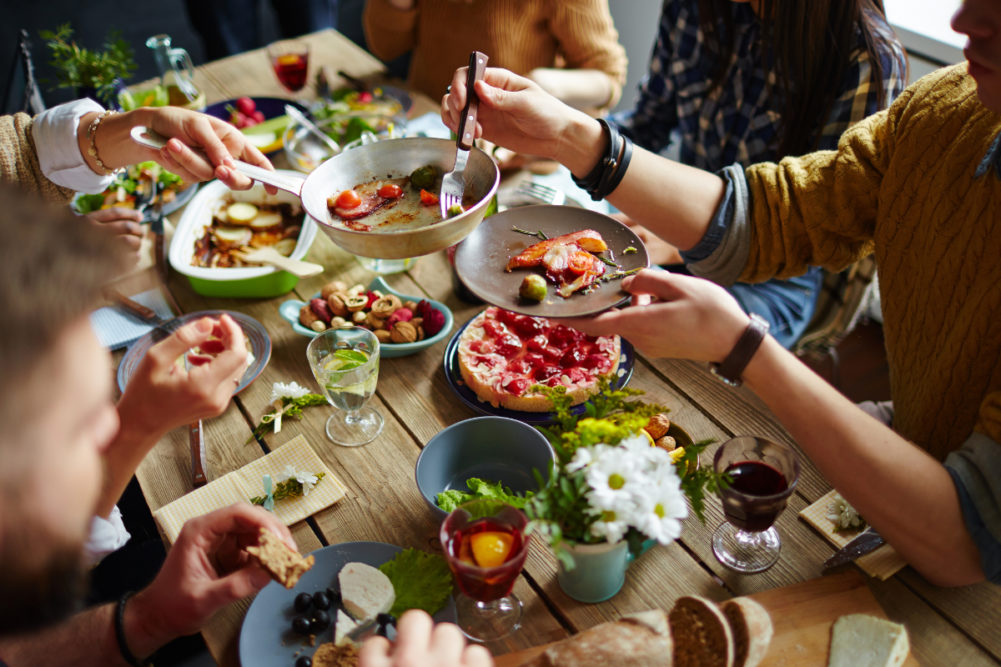BELLEVUE, WASH. - Data released by The Hartman Group comparing consumer eating occasions in Spring 2020 to Spring 2019 identified that while what and how often consumers are eating hasn’t changed much since the onset of coronavirus (COVID-19), where consumers are eating, who they’re eating with and how they’re getting their meals has been significantly impacted by the virus.
“The impact on communities was and still is one of fear,” said Renee Wheeler, a senior consultant with The Hartman Group, during a webinar on Aug. 11. “From fear of personal health and that of others to the falling stock market and high unemployment rates.”
The data for this year’s Spring 2020 survey was collected April 9-30 and surveyed approximately 2,500 adults ages 18-73 that were nationally representative of the US general population balanced against all major demographics.
At the time the survey was conducted, positive cases of COVID-19 were approaching 800,000 and the death toll was close to 40,000. 316 million people were being urged to stay home in at least 42 states and US unemployment rates were at 14.7%, the highest the country had seen since the Great Depression.
The survey results suggested that COVID-19 had little to no impact on eating occasions, with the percentage of consumers participating in the eight most common eating occasions (early morning snack, breakfast, morning snack, lunch, afternoon snack, dinner, after dinner snack and late night meal/snack) staying within one or two percentage points of results from the 2019 Spring survey.
Amid the pandemic, people are also turning to the same food categories as they did before the virus hit, with bread, rolls and tortillas, cheese and eggs the top three food categories among US consumers. The biggest difference was that people were more likely to include cuts of meat and cheese in their dinner meals in April 2020 than they were in 2019, and people also have an increased interest in new flavors.
“Despite the comfort food craving fed through social media, in practice we’re seeing that eaters are seeking to enlighten their food routine categories with new flavors,” Wheeler said. “While having a familiar taste experience remains an important food and beverage attribute, it has actually declined.”
In fact, for all eating occasions except for lunch, consumers were less likely to seek familiar flavors in Spring 2020 than they were in 2019, with the biggest difference shown at dinner time in which 39% of consumers reported that familiar taste at dinner was important to them in 2020, versus 45% in 2019.
COVID-19 has had a much deeper impact on where people are eating their meals. Post-pandemic, 88% of eating occasions take place in the home, a 12% gain from pre-COVID times when meals were consumed in the home 76% of the time.
“Americans are not only much less likely to be eating at restaurants,” Wheeler said, “but are also far less likely to be eating anywhere outside of the home.”
The biggest location changes in specific eating occasions occurred primarily in the morning through afternoon eating times, with 21% more people (81% total) eating lunch at home and 26% more (91% total) eating their afternoon snack at home.
Consumers are also enjoying more meals with other people instead of eating by themselves and cooking more meals at home. Meal occasions made entirely from a restaurant decreased from 24% in Spring 2019 to 17% in Spring 2020. Meanwhile, eating occasions requiring moderate preparation rose from 21% to 25% of all eating occasions and meals with heavy preparation rose from 9% to 12%.
“A reduced reliance on restaurants has not led to an increased reliance on ready to eat (RTE) options but instead has led to an increased engagement in cooking,” Wheeler said. “Because of COVID-19 consumers are far more often looking for new recipes to try, learning new cooking techniques and doing more batch cooking.”
Wheeler predicted that COVID-19 will have a strong impact on the approach younger generations like Gen Z take toward cooking and food prep.
With more eating and cooking taking place in the home, stock-up grocery shopping trips contribute more to everyday eating and purchasing time frames have increased significantly. Forty-one percent of eating occasions involve items purchased when stocking the pantry, with 36% of consumers purchasing items three to seven days in advance and 34% purchasing items eight days or more in advance, compared to 24% in 2019.
Although stock-up trips have increased, same day sourcing is still occurring with nearly 32% of all eating occasions, although they have declined compared to 2019. Twenty-four percent of consumers report making a shopping trip just to get items for a specific occasion in Spring 2020 compared to 26% in 2019.
“Shopping behaviors that focus on efficiency are more common,” Wheeler said. “As the pandemic continues to pose a threat to individuals and communities across the country, we anticipate consumer eating patterns to continue to be impacted for the foreseeable future.”

